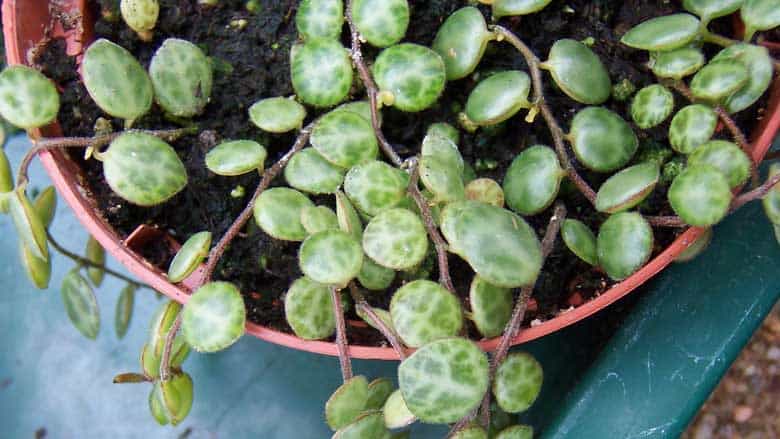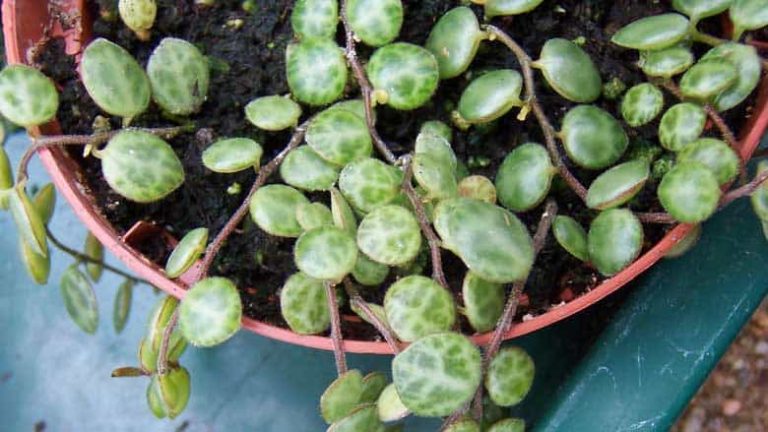If you’re a plant lover looking to expand your collection, propagating a String of Turtles (Peperomia prostrata) is an excellent choice. This unique succulent, known for its small, oval leaves that resemble turtle shells, is not only visually appealing but also easy to propagate. Whether you’re a seasoned gardener or a beginner, this guide will walk you through the entire process of propagating your String of Turtles.

Understanding the String of Turtles Plant
Before diving into the propagation methods, it’s essential to understand what makes the String of Turtles special. Native to Ecuador, this succulent perennial features trailing stems and silvery-green leaves. It thrives in bright, indirect light and requires well-draining soil. With proper care, it can grow up to 24 inches wide, making it ideal for hanging baskets and terrariums.
Propagation Methods
There are two primary methods for propagating a String of Turtles: stem cuttings and leaf cuttings. Both methods are relatively straightforward and require minimal equipment.
Stem Cuttings
Stem cuttings are the most common and effective method for propagating a String of Turtles. Here’s how to do it:
- Selecting the Right Stem: Look for a healthy, lengthy stem with several leaves. Ensure the stem is free from pests and diseases.
- Cutting the Stem: Using sterilized scissors, snip just below a node. Nodes are where leaves and roots emerge from the main stem.
- Preparing the Cutting: Remove a few leaves from the lower section of the cutting to expose some bare nodes. This helps the cutting establish roots more easily.
- Planting the Cutting: Place the stripped cutting in a pot with moistened soil, ensuring that at least one node is buried beneath the surface.
- Caring for the Cutting: Find a spot with bright, indirect sunlight for the potted cutting. Water it enough to keep the soil consistently moist, but avoid over-watering. Misting the plant and soil when they’re dry should be sufficient.
- Checking for Roots: In a few weeks, you should notice root development. To check if it’s rooted, give the plant a gentle tug – resistance indicates successful rooting.
Leaf Cuttings
Leaf cuttings are another viable method for propagating a String of Turtles. Follow these steps:
- Selecting a Healthy Leaf: Gently remove a healthy leaf from the stem, keeping as much of the leaf intact as possible.
- Callousing the Leaf: Allow the leaf to callous for several days in indirect sunlight or away from direct sunlight.
- Planting the Leaf: Once it has calloused, plant the leaf in well-draining potting soil. Press the leaf into the soil and lightly water it.
- Caring for the Leaf: Place the leaf in an area with indirect sunlight and keep the soil moist but not wet.
- Monitoring Growth: With proper care, the leaf should begin to form roots after several weeks. When the leaf has a well-established root system, you can transplant it into a larger pot or the garden.
Creating the Ideal Propagation Environment

To ensure your String of Turtles thrives, creating the right environment is crucial. Here are some key factors to consider:
Light, Temperature, and Humidity
- Light: Position your plant in a spot with bright, indirect light to maintain its charming variegation without the harshness of direct sun.
- Temperature: These tropical treasures prefer a cozy range between 65 – 75 degrees F (18 – 24 degrees C).
- Humidity: Aim for a humidity level above 85%, but don’t turn your propagation station into a swamp. If you notice your plant sending out SOS signals, consider misting it every few days or investing in a humidifier for that consistent tropical vibe.
Soil and Water Requirements
- Soil Mix: A mix that’s well-draining and aerated will do wonders. Think of a blend of peat, perlite, and pine bark, and you’re on the right track.
- Watering: Let the soil’s thirst guide you. Allow the mix to dry out between waterings to keep those roots from drowning. Before you pour, do the finger test—if the soil sticks to your finger, it’s not party time for the watering can yet.
Aftercare for Propagated Plants
After propagating your String of Turtles, proper aftercare is essential for its success. Here’s what to do:
Initial Maintenance
- Watering: Water thoroughly after propagation. Keep it in bright, indirect light; direct sunlight is a no-no as it can be too intense for your delicate green buddy.
- Monitoring Growth: Your String of Turtles will show its gratitude through growth milestones. New leaves are a high-five for your efforts. However, be vigilant for signs of distress like yellowing leaves or wilting—these are SOS signals.
Pruning
Pruning isn’t just a haircut for aesthetics; it encourages fuller growth and branching. So, don’t hesitate to give your plant a trim if it starts to look a bit wild. It’s like guiding a young sapling to grow up strong and well-mannered.
Troubleshooting Propagation Challenges
Despite your best efforts, you might encounter some challenges during the propagation process. Here are some common issues and solutions:
Root Rot
Overwatering is often the culprit, turning a thriving plant into a soggy mess. To combat this, let the soil dry out between waterings. If you suspect root rot, it’s time for some plant surgery. Remove the plant from its pot, trim away the blackened roots, and repot in fresh, well-draining soil.
Wilting Leaves
Wilting leaves can be deceptive, as they might signal underwatering or a more sinister root problem. Check the soil moisture; if it’s dry, give your plant a drink. If it’s wet, ensure proper drainage and consider the possibility of root rot. Adjust your watering habits accordingly.
Tips for Increasing Success Rates
For a higher success rate in propagation, timing is everything. Spring and summer are the golden seasons for plant growth, making them ideal for propagation. Ensure your cuttings come from healthy vines and that the nodes are snugly buried in the soil. A humidity dome can work wonders, but once you see new growth, transition to normal care to avoid babying the plant too much.
Consistent light is key to avoiding a host of issues. Too little light and your plant’s growth will be as sluggish as a sloth on a lazy Sunday. Too much direct sunlight, and you’ll find your String of Turtles turning as red as a lobster. Aim for that sweet spot of bright, indirect light.
Lastly, remember that patience is a virtue. Not every cutting will take root, and not every division will flourish. But with careful observation and a bit of TLC, your String of Turtles will reward you with new growth and the satisfaction of propagation success. Keep the faith, and keep propagating!
Final Thoughts
Propagating a String of Turtles is a rewarding experience that allows you to share this beautiful succulent with friends and family. With the right tools and knowledge, you can have a successful Peperomia prostrata plant that will thrive in your home or garden. Before you start caring for String of Turtles plants, familiarize yourself with the basics: adequate light exposure, proper watering schedules, humidity levels, and temperatures.
The String of Turtles plant also appreciates a good pruning to keep them from becoming too long. With careful attention and regular maintenance, Peperomia prostrata will look stunning and live long in your care. Enjoy the unique foliage of String of Turtles and enjoy this beautiful plant!
Meta Title: How to Propagate String of Turtles
Meta Description: Learn how to propagate String of Turtles with our complete guide for beginners. Easy steps and tips for success.
Author: Jane Doe
Title/Role: Plant Care Expert
Credentials: With over 10 years of experience in horticulture, Jane Doe specializes in indoor plant care and propagation techniques.
Profile Link: www.janedoeplantcare.com
Sources:
1. Perfect Plants Nursery
2. Homes & Gardens
3. Gardening Know How
Internal Links:
1. How to Care for String of Turtles
2. Common Pests and Diseases
3. Winter Care Tips
Schema Markup:
{
"@context": "https://schema.org",
"@type": "Article",
"headline": "How to Propagate String of Turtles: A Complete Guide for Beginners",
"description": "Learn how to propagate String of Turtles with our complete guide for beginners. Easy steps and tips for success.",
"author": {
"@type": "Person",
"name": "Jane Doe"
},
"publisher": {
"@type": "Organization",
"name": "Plant Care Expert",
"logo": {
"@type": "ImageObject",
"url": "https://www.janedoeplantcare.com/logo.png"
}
},
"datePublished": "2023-10-05"
}
Featured Snippet Optimization:
“Learn how to propagate String of Turtles with our complete guide for beginners. Easy steps and tips for success.”
CTA:
Stay updated with the latest news on plant care and propagation techniques. Explore today’s headlines and discover new ways to enhance your garden!












More Stories
US Trending News: The History and Legacy of Zoo York in Streetwear Culture
What Is Yodo Para Tiroides and How Does It Affect Thyroid Health?
Understanding ‘You Got That Right’ in The New York Times: Context and Implications